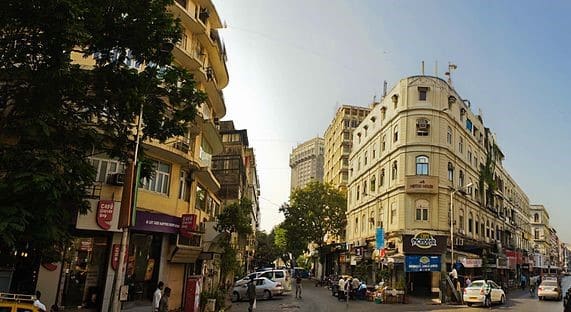On August 27, a portion of a three-storied building collapsed in Nagpada. Two people, including a 12-year-old girl, were killed. The building was dilapidated and had long standing plans to be redeveloped.
Despite the collapse, residents refused to vacate the building. “They kept saying that our part of the building is fine and we will continue to stay here. They didn’t want to shift to transit camps in distant suburbs. The fire brigade and the civic authorities had to disconnect their water and electricity connections to get them to vacate their building,” said Amin Patel, local legislator from Mumbadevi constituency, which houses many of these dilapidated buildings on the verge of collapse.
Yet residents continue to stay doggedly in buildings with bamboo sticks propping up the plaster, roofs falling and plasters peeling. Many of these structures are already classified as dangerously dilapidated and are termed “beyond repair” structures that need to be redeveloped. By some estimates, about 16,000 buildings in Mumbai have outlived their lifespans.
The BMC often forces them to vacate by threatening to withdraw their basic facilities like water and electricity. Why would people risk their lives and limbs to stay put in such structures resisting every attempt to evict them out?

The answer probably lies in the trust deficit in the authorities. Residents worry that once they vacate their premises, they might end up homeless in the city. “About 1.25 lakh families and more have been rendered homeless in the name of redevelopment. About 85% of the residents don’t even return back to their new redeveloped buildings,” says Chandrashekhar Prabhu, an housing activist, architect and former president of the Maharashtra Housing and Area Development Authority (MHADA). Tenants resist efforts to vacate their premises as they view them as efforts to dis-house them.
Recently, the Bombay High Court (HC) ordered that tenants of dilapidated buildings must shift out and cannot demand transit camp accommodation.
Though the tenants are promised alternative houses or rents, activists say that once the inhabitants vacate, the developers give them a hard time. The tenants are meant to be housed in an alternate building by the developers. And the developers and builders are expected to pay rent to the tenants. In many cases, they fail to pay rent.
“There are about 5,800 stuck up redevelopment projects in Mumbai, where tenants have shifted out for redevelopment for over a decade and developers have stopped paying rents. Landlords ask tenants to vacate by offering them paltry sums to find some kind of transit accommodation. Tenants aren’t sure whether they will ever come back or whether their building will be redeveloped,” says Prabhu.
“In the past 35-40 years, we have redeveloped only about 2500 cessed buildings. At this pace, we will take 150 years to redevelop all 16,000 buildings,” says Prabhu.
The government transit camps within the island city are almost full. The government has only a few transit camps left in distant suburbs like Borivali. The transit camps have been moving away from the city areas from Colaba to Sion to Bandra to Borivali.
Most of these dilapidated buildings are located in prime locations in the city like Nagpada and Girgaum that are very close to commercial business districts of Churchgate, Nariman Point and Ballard Pier. Shifting to distant suburbs disturbs the schooling, social and work infrastructure of these families. “Why would a taxi driver in Mumbai want to go far to Borivali; he would end up wasting so much of time and fuel just coming to town everyday, “ observes Patel.
Not surprisingly, tenants approach the court to get a stay on such eviction orders and cases drag on for years.
During the redevelopment period, the developers are expected to pay rent to tenants. Most of these dilapidated buildings are located in prime locations commanding rents of about Rs 26,000 per month for say 260 sq ft house which developers are expected to provide commensurate rents of the area.
The tenants and owners also clash over the redevelopment rights further dragging such projects for way too long. As on date, about 150 redevelopment projects are stuck, with about 100 projects not having even taken off despite receiving permissions to redevelop, according to Vinod Ghosalkar, chairman of MHADA’s Mumbai Building Repair and Reconstruction Board (MBRRB).
“The current market conditions are not the brightest and builder’s margins are not as high as they once used to be and hence all stakeholders must understand and accommodate each other” says. Madhu Anna Chavan, an ex-MHADA president from 1999 -2004 and former functionary of the Mumbai Bhadekaru Sangh, a body of tenants. “Tenants should not demand bigger houses, builders should complete their projects on time and the government should display political will to push through this issue and not keep ignoring it,” he says.
He says tenants demand free bigger houses, higher corpus and more rent during the under-construction period. “Projects should be completed in time-bound manner and tenants should be handed their redeveloped houses in stipulated time. Unless they are convinced that they will surely get their houses back in a definite time frame, say three years, they will continue to cling on tightly to their dilapidated houses,” says Chavan.